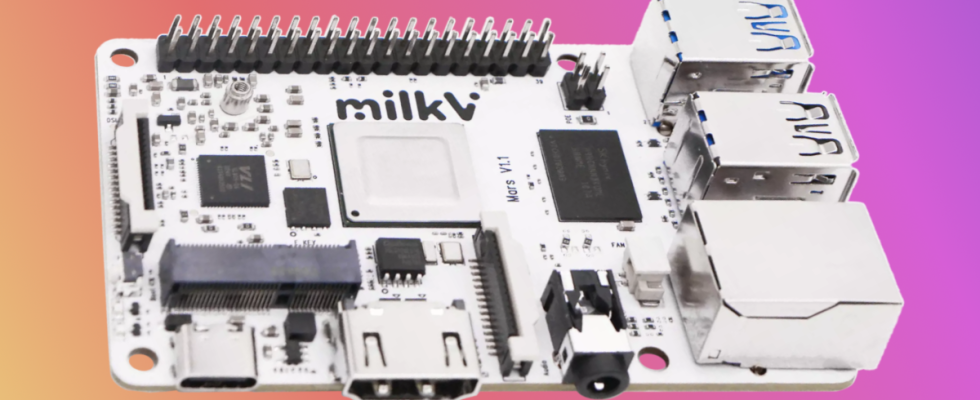“As much RISC-V as there are stars in the Milky Way”, is the goal of Milk-V from China. The company has announced two single-board computers (SBC) and even a workstation. The SBCs have great role models: The Milk-V Mars Except for a few details, it is similar to the Raspberry Pi 3, the duo the Raspberry Pi Pico. In addition, Milk-V is planning another one Workstation called Pioneerwhich has 64 cores.
While Pioneer and Duo use Systems on Chip (SoCs) from a manufacturer called Sophgo, there is an acquaintance on Mars: the JH7110 from Starfive, which we have already tested on the Visionfive 2. Mars compares the board to the Raspberry Pi 3, which is apt given the performance of the four U74 cores. The board is also the same size, connectors and SoC are in the same place. The board is designed to fit into a Raspberry Pi 3 case. The manufacturer particularly emphasizes the 40-pin GPIO connection – whether it is fully compatible with modules for the Raspberry Pi remains open.
Unlike the Raspberry Pi, there is no built-in WiFi chip. To be able to communicate wirelessly, a PCIe module must be installed. The board should not only be able to be supplied via a USB-C socket, but also via Power over Ethernet (PoE). In addition to the SD card, an eMMC module can be installed as storage. Milk-V is planning variants with 1, 2, 4 and 8 GB of LPDDR4 memory.
Linux-enabled microcontroller board
The SBC Duo is also interesting: In the format of the Raspberry Pi Pico, it accommodates a SoC with two RISC-V cores. They should clock at 1 GHz, and 64 MB of RAM are also integrated in the chip housing. Milk-V promises that the board is Linux-capable, the only question is how well the built-in SB1800B is supported. Unfortunately, the English part of Sophgo’s homepage doesn’t even contain any information about the SoC.
This looks different with the SG2042, which is to be installed in the workstation called Pioneer: There is at least one here product page with basic information. But we also get that with Milk-V: The 64 cores clock at up to 2 GHz, there is 64 MB L3 cache and 1 MB L2 cache per cluster – how many cores form a cluster remains open. According to Hackster.io the cores use the Xuantie C920 design from Alibaba’s T-Head processor division. It adds a vector unit to the C910 introduced in 2018.
The SoC consumes up to 120 watts of power, the DDR4 memory controller has four channels. There is space for expansion cards in three PCIe 4.0 x16 slots, but the SoC only has 32 lanes. The built-in 10 GBit network card underlines the professional claim X520-DA2 from Intelan AMD R5 230 is installed for the graphics output.
price and availability
Of the products shown on the homepage, only the Milk-V Duo is currently available – and only in China via a Xiaoe Tech platform. It should cost 35 yuan here, around 4.60 euros, similar to the model. On its own product page, Milk-V lists 9 US dollars as the retail price.
Milk-V is not yet naming any prices for Mars and the Pioneer workstation. SBCs and workstations are to be offered worldwide via Aliexpress in the long term – when that will be is currently still in the stars.

